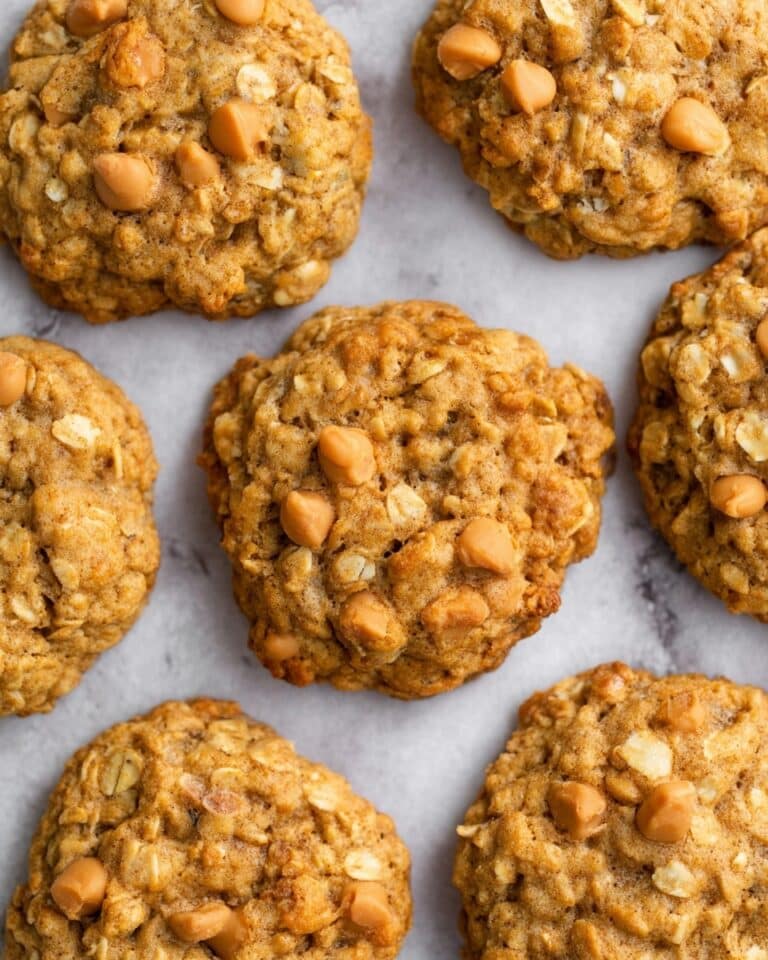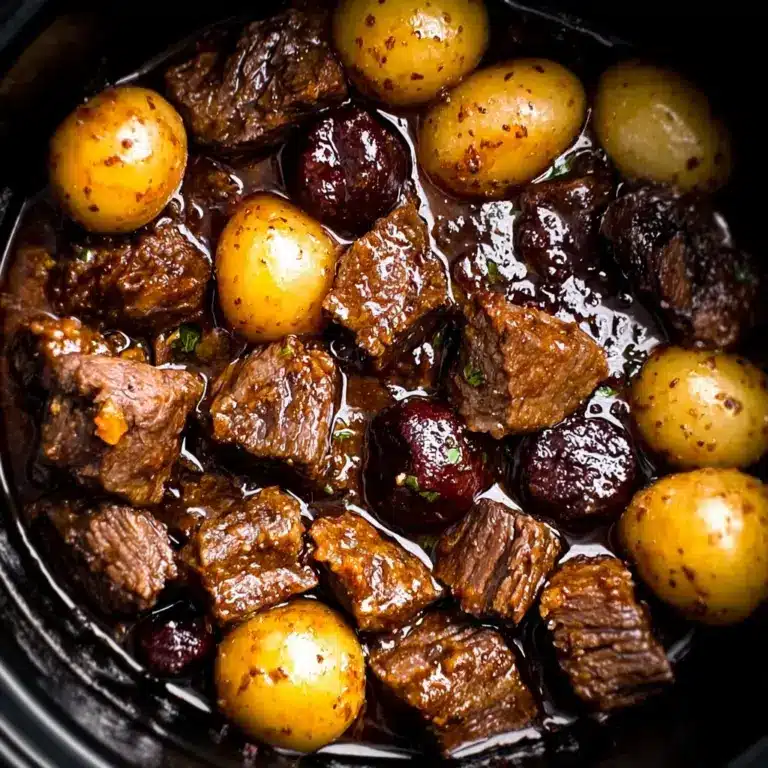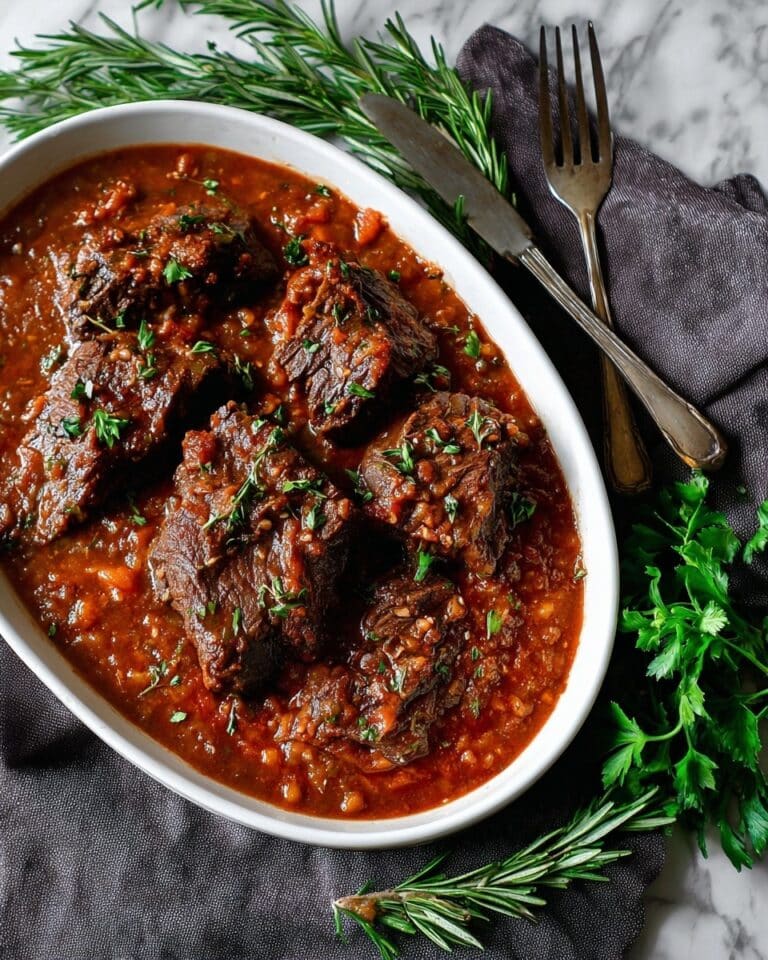Sourdough Bread Recipe
Introduction
This dill and pickle sourdough bread offers a unique twist on classic sourdough with tangy flavors from brine and fresh herbs. Its golden crust and chewy crumb make it a delightful treat for any sandwich or snack. Let’s dive into this flavorful homemade bread recipe.
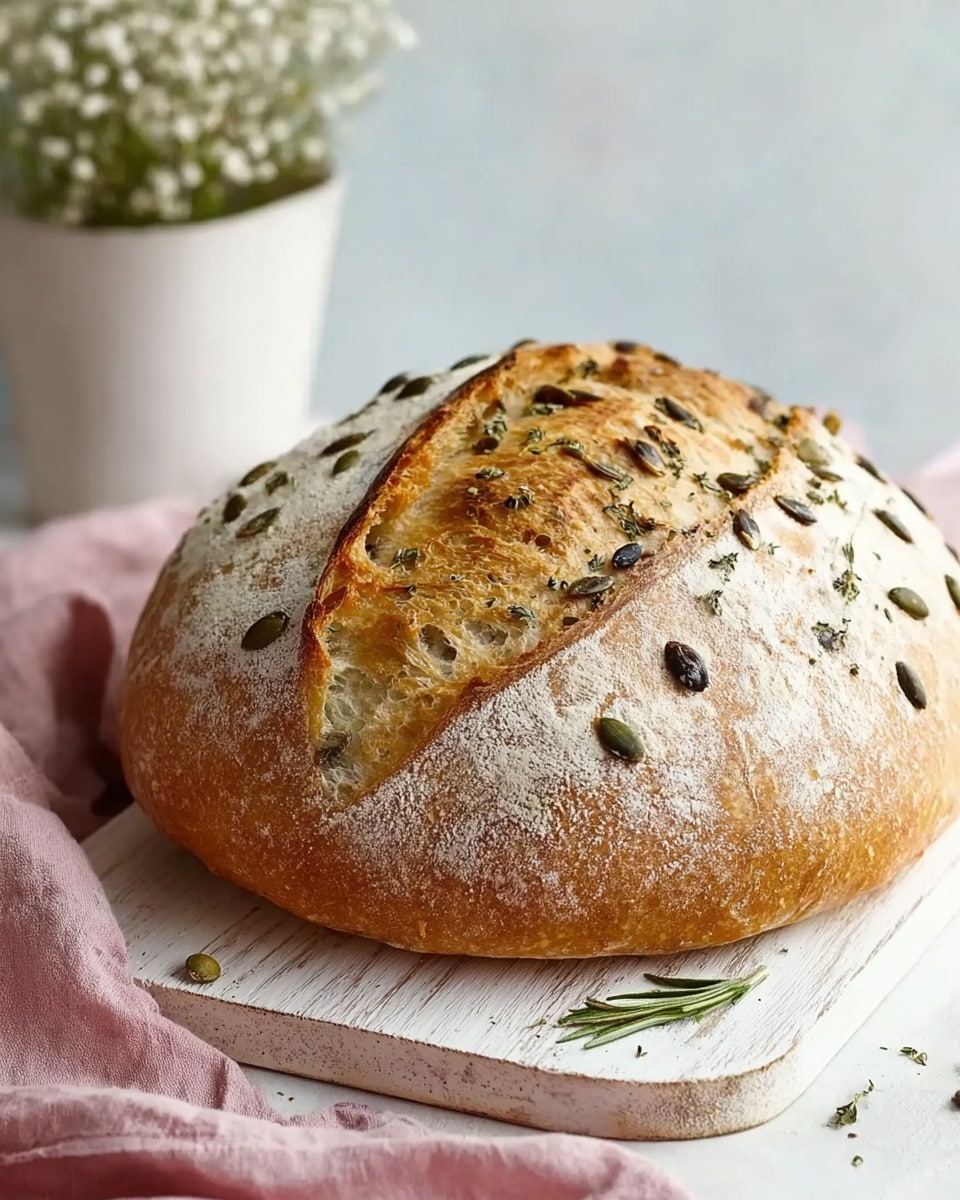
Ingredients
- 50 grams active sourdough starter
- 260 grams filtered water, warmed to about 85°F
- 30 grams brine from dill pickles
- 375 grams organic white bread flour
- 35 grams whole wheat flour
- 7 grams fine sea salt
- 80 grams diced dill pickles (patted dry with paper towel)
- 1 1/2 tablespoons fresh dill, finely chopped
Instructions
- Step 1: In a large bowl, mix the sourdough starter, warm water, and pickle brine with a fork until the starter is well dispersed. Add both flours and mix initially with a spatula, then by hand, until a shaggy dough forms with no dry flour visible. Sprinkle salt on top, cover the bowl with a damp cloth, and let it rest for 40 minutes.
- Step 2: After resting, knead the dough vigorously by hand for two minutes to incorporate the salt. Perform the first stretch and fold by grabbing a portion of the dough, stretching it upwards, and folding it over itself. Cover and let rest for 30 minutes.
- Step 3: Sprinkle the diced pickles and fresh dill evenly over the dough, reaching the edges of the bowl. Perform another stretch and fold to distribute the flavorings, then cover and rest for 30 minutes.
- Step 4: Repeat the stretch and fold sequence followed by 30-minute rests two more times, completing a total of four stretch and fold cycles to develop the dough’s structure.
- Step 5: Allow the dough to bulk ferment, covered with a damp cloth, on your counter until it rises about 75%, approximately 4 hours at 74°F. When slightly less than doubled, glossy, and bubbly, gently transfer to a floured surface and rest 10-15 minutes. Shape the dough as desired, place it seam-side up in a flour-dusted, linen-lined banneton, cover, and allow the final rise.
- Step 6: For the final proof, either refrigerate overnight up to 12 hours or leave on the counter for about 1 1/2 hours until puffy. Preheat your oven to 450°F with a Dutch oven inside. Turn the dough onto parchment, seam side down, score the surface at least ½ inch deep, place inside the Dutch oven, cover, and bake 25 minutes. Remove the lid, reduce temperature to 435°F, and bake another 20 minutes until golden and crackly.
- Step 7: Let the bread cool completely for at least one hour before slicing to ensure the best texture and avoid gumminess from steam.
Tips & Variations
- Pat pickles dry thoroughly to prevent excess moisture which can weaken the dough.
- For a milder dill flavor, reduce fresh dill to 1 teaspoon or substitute with dried dill.
- Use a banneton or bowl lined with a well-floured linen cloth to prevent sticking and support shape.
- If you don’t have a Dutch oven, bake on a preheated baking stone with a tray of water to create steam.
Storage
Store the bread in a paper bag or loosely wrapped in a clean kitchen towel at room temperature for up to 3 days to maintain crust crispness. For longer storage, freeze tightly wrapped slices and toast them when needed. To refresh crust crispness after storing, reheat in a preheated oven at 350°F for 10 minutes.
How to Serve
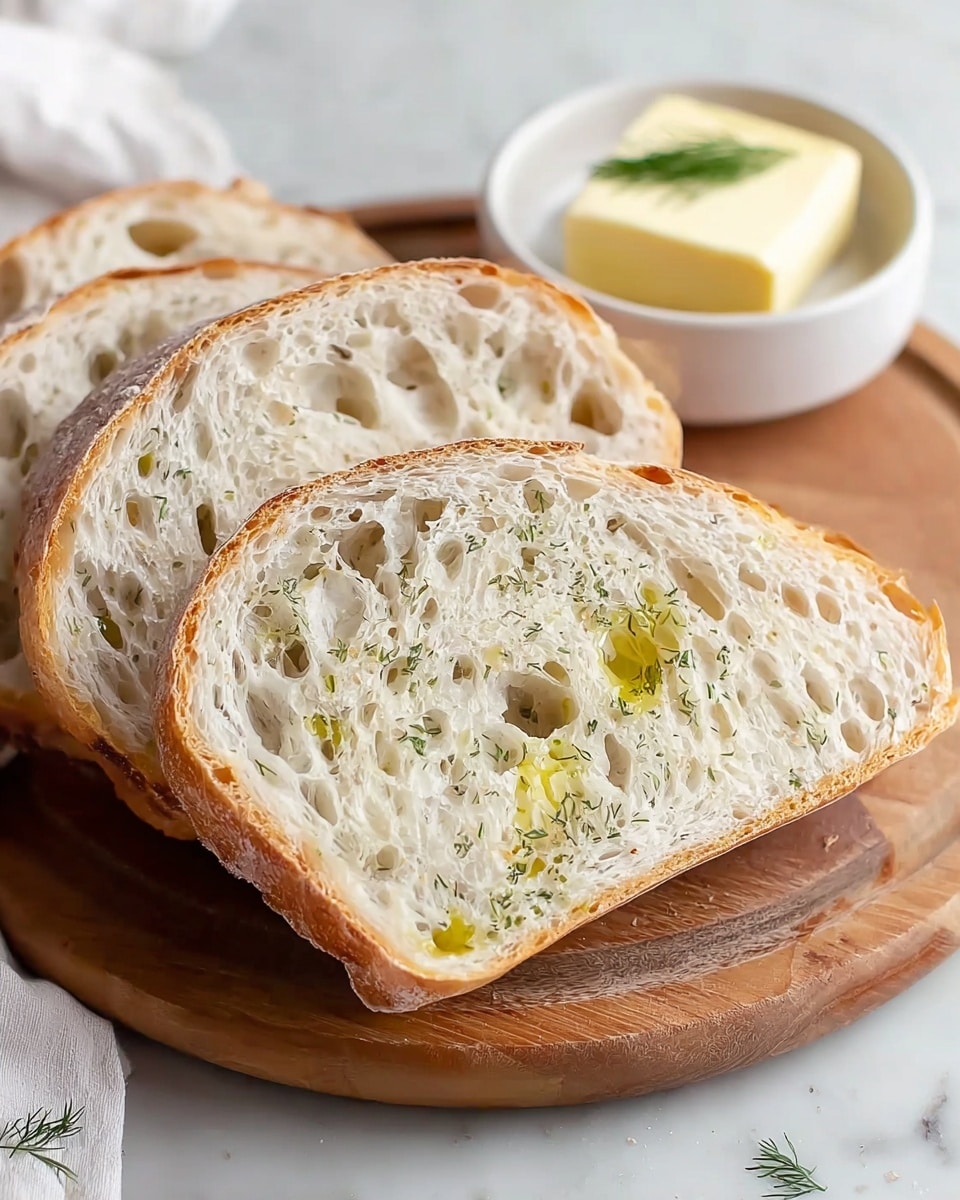
Serve this delicious recipe with your favorite sides.
FAQs
Can I use pickle brine from other types of pickles?
Yes, you can experiment with different pickle brines, but dill pickle brine complements the fresh dill and sourdough flavor best. Avoid overly sweet brines for this recipe.
What if my dough doesn’t rise enough during bulk fermentation?
Dough rise depends on temperature and starter activity. If your kitchen is cool, allow more time for fermentation or try proofing in a warmer spot. Make sure your sourdough starter is active and bubbly before starting.
PrintSourdough Bread Recipe
This unique sourdough bread recipe incorporates diced dill pickles and fresh dill for a flavorful twist on traditional bread. Featuring a tangy pickle brine in the dough, combined with a careful stretch-and-fold technique and slow fermentation, this loaf yields a crusty, golden exterior with a moist, tender crumb infused with bright herbaceous and tangy pickle notes.
- Prep Time: 20 minutes
- Cook Time: 45 minutes
- Total Time: 6 hours 5 minutes (including rests and fermentation, excluding overnight proofing)
- Yield: 1 loaf (about 1.5 pounds) 1x
- Category: Bread
- Method: Baking
- Cuisine: American
- Diet: Vegetarian
Ingredients
Starter and Liquids
- 50 grams active sourdough starter
- 260 grams filtered water, warmed to about 85°F
- 30 grams brine from dill pickles
Flours and Salt
- 375 grams organic white bread flour
- 35 grams whole wheat flour
- 7 grams fine sea salt
Flavorings
- 80 grams diced dill pickles (patted dry with paper towel to remove extra moisture)
- 1 1/2 tablespoons fresh dill, finely chopped
Instructions
- Mix and Initial Rest: In a large bowl, combine your active sourdough starter, warmed filtered water, and pickle brine. Use a fork to disperse the starter thoroughly. Add the white bread flour and whole wheat flour, initially stirring with a spatula then mixing by hand until a shaggy dough forms with no dry flour visible. Sprinkle the salt evenly over the dough, cover the bowl with a damp cloth, and let it rest for 40 minutes to hydrate and begin gluten development.
- Knead and Incorporate Salt: After resting, knead the dough vigorously by hand for two minutes to fully incorporate the salt. Then perform the first stretch and fold by grabbing a portion of dough, stretching it upwards, and folding it over itself. Cover the bowl again and rest the dough for 30 minutes to strengthen the gluten network.
- Add Flavorings and Continue Stretch and Fold: Sprinkle the diced pickles and finely chopped fresh dill evenly over the dough, making sure to reach the edges of the bowl. Perform another stretch and fold sequence to integrate the flavorings thoroughly into the dough. Cover and let rest for another 30 minutes.
- Complete Stretch and Fold Sequences: Repeat two more cycles of 30-minute rests followed by stretch and fold sequences, totaling four in all. These steps build the dough’s structure and elasticity needed for a good rise and open crumb.
- Bulk Fermentation and Shaping: After the final stretch and fold, cover the dough with a damp cloth and allow it to bulk ferment on the counter at about 74°F until it has increased by approximately 75%, which should take around 4 hours. The dough should be glossy and have a few bubbles visible beneath the surface but not quite doubled. Gently transfer it onto a floured surface and let it rest 10-15 minutes. Shape the dough to your preference and place it seam-side up into a flour-dusted, linen-lined banneton. Cover with a shower cap or damp cloth and allow the final proof.
- Final Proof and Baking: The final proof can be done overnight in the refrigerator for up to 12 hours, which helps ease scoring and maintain shape, or on the counter for about 1 1/2 hours until the dough is puffy and risen slightly. Preheat your oven to 450°F with a Dutch oven inside. Place a piece of parchment over the dough, flip it out seam-side down, and score the top at least 1/2 inch deep to allow gases to escape during baking. Transfer the dough on the parchment into the heated Dutch oven, cover, and bake at 450°F for 25 minutes. Remove the lid, reduce the oven temperature to 435°F, and bake for another 20 minutes until the crust is golden brown and crackly.
- Cooling: Remove the bread from the oven and allow it to cool completely on a wire rack for at least one hour before slicing. This resting time ensures the crumb sets properly and prevents gumminess from residual steam. Enjoy your homemade dill and pickle sourdough bread!
Notes
- Ensure your sourdough starter is active and bubbly for best fermentation results.
- Warming the water to about 85°F helps kickstart fermentation without killing the wild yeast.
- Pat dry the diced pickles before adding to prevent excess moisture in the dough which can weaken the gluten.
- Using a Dutch oven traps steam during baking, essential for crust development.
- Final proofing in the fridge overnight enhances flavor depth and makes scoring easier.
- Let the bread cool completely before slicing to maintain ideal texture.
- Adjust proofing times according to ambient temperature; warmer climates require less time and cooler climates more.
Keywords: sourdough bread, dill pickle bread, homemade bread, fermented bread, bread baking, sourdough starter, artisan bread




